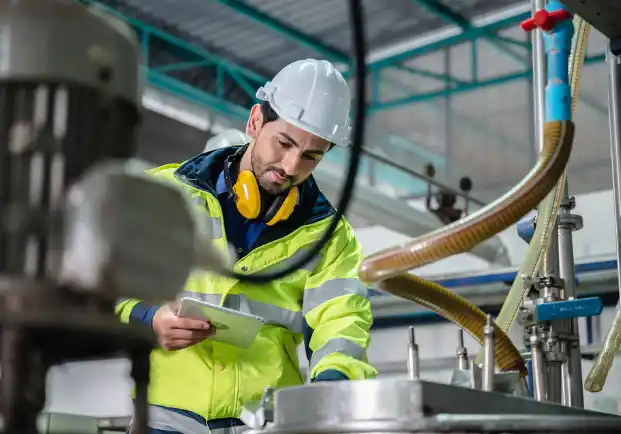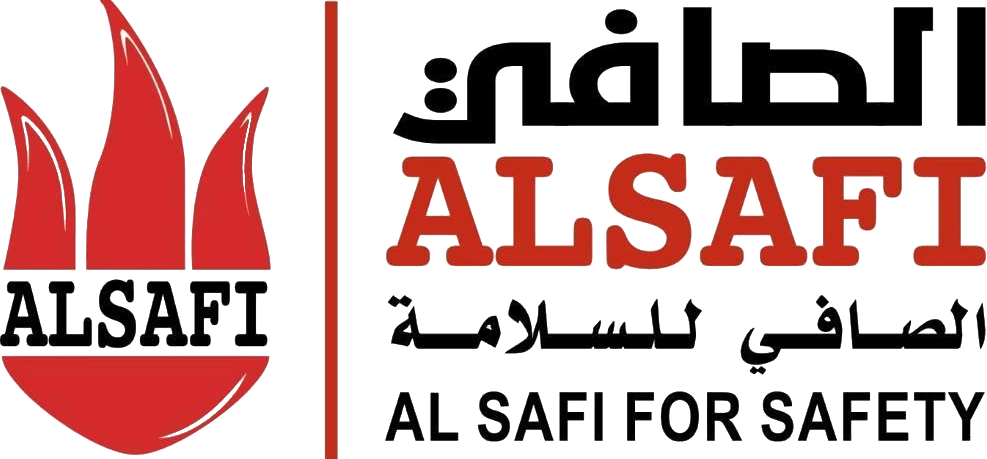Safety Equipment in Hospitals | A Comprehensive Guide to Protecting Lives

There are many potential hazards in hospitals that threaten both lives and property. Safety tools in hospitals play a key role in reducing potential risks and addressing incidents before they occur. These tools range from automatic fire suppression systems and early fire detection systems to personal protective equipment, and more. In this article, we’ll outline the most important safety tools used in hospitals.
What are the safety requirements in hospitals?
Hospital safety requirements aim to protect individuals from potential health and environmental risks in the workplace and to provide a safe environment that ensures the safety of workers and visitors. The main requirements include:
1) Risk assessment
Conduct a prior analysis of potential risks in the work environment and identify sources of hazards—whether electrical systems, equipment, or chemicals.
2) Use of personal protective equipment (PPE)
Use safety tools such as PPE and train staff on proper usage. Examples include gloves, masks, helmets, goggles, and more.
3) Emergency procedures
Identify hospital emergency exits and train staff to use them. Establish emergency plans for incidents such as fires or hazardous material spills.
4) Continuous awareness
Regularly educate hospital staff on all safety requirements and provide periodic training on occupational health procedures.
Key types of safety tools in hospitals
Safety tools in hospitals play a vital role in rapid fire response, enhancing the safety of everyone in the hospital. The main tools include:
1) Fire extinguishers
Types of fire extinguishers are among the most important safety tools in hospitals. They provide a quick and effective means to combat fires in their early stages, help limit the spread of flames, and prevent escalation until specialized firefighting teams arrive.
2) Emergency doors
Emergency doors strengthen safety and security systems in hospitals by providing fast, safe evacuation routes during emergencies such as fires.
These doors are designed to be fire-resistant and to prevent the spread of fire and smoke between hospital departments, providing enough time for the safe evacuation of workers, patients, and visitors.
3) Fire hose cabinets
The fire hose cabinet is one of the most important safety tools in hospitals and a core component of the fire-fighting system. It contains a hose that delivers water at high pressure when a fire breaks out. These cabinets are installed at strategic locations in the hospital for easy access when needed.
Using the fire hose cabinet enables a fast and effective fire response, limiting spread and reducing potential damage. Its presence also enhances staff ability to respond immediately to emergencies, protecting lives and property.
4) Fire sprinklers
Fire sprinklers are an essential part of automatic suppression systems. They detect fires in their early stages and alert building occupants—helping protect lives and reduce potential damage and risks.
5) Fire detectors
Fire detectors provide early detection of fire or smoke in the building. They monitor environmental changes such as smoke presence or temperature rise and send instant signals to central alarm systems.
Thanks to early detection, they help prevent fires from spreading before the situation escalates—protecting visitors, patients, and staff.
6) Fire pumps
Fire pumps are also among the most important safety tools in hospitals. They ensure a rapid and effective response by delivering high-pressure water to hoses and sprinkler systems for immediate suppression when detectors identify a fire.
Because they provide a steady, continuous water flow, fire pumps help control fires quickly and prevent spread—protecting lives and hospital buildings.
Importance of complying with Civil Defense requirements in hospital design
Compliance with Civil Defense requirements in hospital design is essential to ensure a safe environment for staff, patients, and visitors. Compliance includes equipping hospitals with accessible, clearly marked emergency exits, effective fire alarm and suppression systems, and fire-resistant building materials, as well as regularly training staff on emergency and rapid evacuation procedures.
Strict adherence to these standards enhances a hospital’s ability to respond efficiently to any emergency, helping protect lives and property and minimizing human and material losses.
Importance of appointing a safety officer in hospitals
Appointing a safety officer helps protect lives and strengthen facility security. This officer oversees implementation and updates of safety protocols, manages preventive systems such as fire-fighting equipment and early warning systems, and organizes emergency drills for staff.
By coordinating all aspects of safety, the officer ensures quick and effective emergency response and fosters a safety culture within the hospital—reducing the likelihood of incidents and improving protection for staff and patients.
Where can I get hospital safety tools?
- Hospital safety tools are essential to protect both workers and patients. Al-Safi Company supplies the latest high-quality tools, including advanced fire-fighting systems, a wide range of extinguisher types, and high-efficiency early warning devices.
- You’ll appreciate Al-Safi’s extensive experience and high-quality products that help ensure effective fire suppression and mitigation of potential risks—along with very competitive pricing.
- The company also provides an excellent customer service team ready to answer your questions at any time. Don’t hesitate to call us now if you’re looking for top-quality hospital safety tools at the best price.
In conclusion, hospital safety tools are essential to ensure a protected and safe environment for both staff and patients. They safeguard lives and property when fires or other potential hazards occur, and their presence is a necessity that cannot be overlooked.
Frequently asked questions about hospital safety tools
What types of fire extinguishers are used in hospitals?
Common types include powder, foam, and carbon dioxide (CO₂), each intended for specific classes of fire.
What are key safety standards in hospitals?
Key standards include providing adequate safety tools, educating staff about potential risks, and training them regularly on how to respond to incidents to maintain a safe environment.
What types of safety hazards exist in hospitals?
General hospital hazards include biological, chemical, electrical, and radiological risks. These can be reduced by implementing appropriate safety policies and procedures and training staff on the safe handling of equipment and materials.



